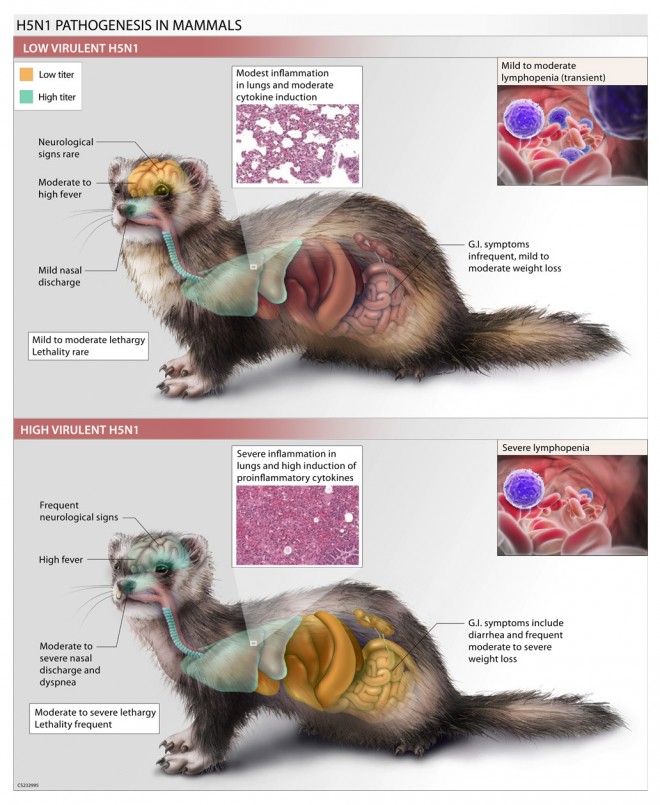
Pathogenesis in Mammals
The ferret acts as a model for human comparison in the study of influenza virus pathogenesis. The illustration clearly identifies which tissues/organ systems exhibit dramatic differences between high virulent and low virulent H5N1 viruses.
Ferret infection with H5N1 viruses of low virulence is typically characterized by and therefore illustrated with fever, mild to modest weight loss, relatively mild lethargy and minimal clinical signs. Lymphopenia in peripheral blood is transient. Both high and low virulent H5N1 viruses replicate to high titer in ferrets.
Infection with highly virulent H5N1 viruses is described by illustrating systemic spread of virus, with infectious virus detected at a low titer in peripheral blood, spleen, liver, and intestine, among other organs. Highly virulent H5N1 viruses, are characterized by the presence of numerous clinical features, including fever, nasal discharge, lethargy, anorexia, diarrhea, and dyspnea, with pronounced weight loss often leading to fatal infection.
Silver Davey Award for Individual Achievement in Art Illustration
Issued by Davey Awards · Jan 2015

